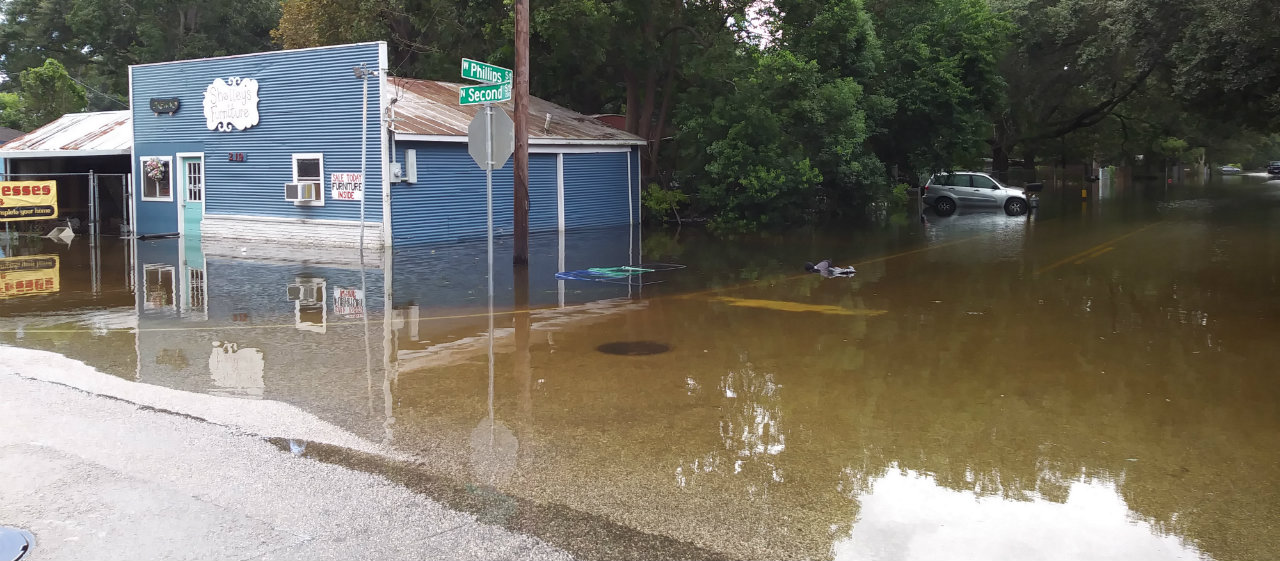
by Jennifer Davis
It was Tuesday night, August 22, when the text came through. I was sound asleep and wouldn’t get it until the following morning. It was from my sister-in-law in a neighboring town, and it was long. She had sent me a list of advice to help us get through the days to come, as our area prepared for a tropical storm. I didn’t think much of it and just kind of skimmed it.
To be honest, I thought she was being a bit dramatic. I mean, “Get to the grocery store as soon as you can, things will be out of stock if you wait much longer … heed all evacuation warnings! Don’t wait! … Fill up your gas tanks, and keep them topped off!” — it all kind of made me chuckle. I wasn’t exactly worried. I had kids to dress and feed and get to school, and I had already done my grocery shopping for the week. It was Tuesday. The forecast said there was nothing to worry about until Friday night. I typed a quick “thanks.” and went on about my day.
As of that morning, we had lived in Friendswood, a small town tucked away between Houston and Galveston in Southeast Texas, for exactly seven weeks and three days. Although I had lived through Hurricane Ike in 2008 (one of the worst hurricanes of my lifetime) I still felt pretty confident, that 1.) things were surely being blown out of proportion, and 2.) we were ready for a little old tropical storm.
The Storm Rolls In
By Thursday afternoon, August 23, things hadn’t changed much, and I was still feeling complacent. After picking the kids up from school, my husband called to ask if we had plenty of bottled water and food. I laughed at him. I told him we were fine, and that I wasn’t going anywhere near any grocery store with the “apocalyptic crazies.” Social media was blowing up with jokes and “fake news” about the coming storm.
As the afternoon wore on, though, even legitimate news stations were getting wound up. School closings were coming in left and right. By 5 p.m., I was alerted via email that the school my children attend would be closed on Friday.
By 7 p.m., Tropical Storm Harvey had been upgraded to hurricane status. Prepared or not, there was nothing left to do but sit and wait.
I awoke that night when the power went out. The rain was pounding, and the wind was loud and terrifying. Halfway through the night, the wind gusts became so powerful that my patio doors were blown open, allowing rain to soak the floors and furniture in our living room. If I wasn’t scared before then, I was getting there fast. I will never forget waking my husband to tell him what had happened, and the two of us working together to secure the doors and clean up the water in the middle of the night while our three children slept.
Sleep was impossible after that. I just lay in bed praying for safety, waiting for morning.
By 2 p.m. the next day, Hurricane Harvey had become a Category 3 hurricane, and was headed directly for the Texas coast, near Corpus Christi. By 6 p.m., Harvey was a ferocious Category 4 hurricane. At 10 p.m., Harvey made landfall, crashing into tiny beach towns south of us like Port Aransas, Rockport and Matagorda.
The Rains Came Down
On Saturday, August 25, Harvey was hovering within 100 miles of where it had made landfall, and was back to tropical storm status. The hurricane-force winds were no longer the main concern; it was the rainfall everyone was worried about. Projections showed that Southeast Texas would receive 50 inches of rainfall, on average, over the next three days, making it the most extreme rain event in US history.
It’s hard to describe the difference a day makes in a situation like this. One day, our town was a bustling little metropolis, full of people living their normal lives; the next day, it just wasn’t. Businesses were boarded up, there were no cars on the roads, and things were eerily quiet.
Everything was quiet, that is, except the rain. The rain was unreal.
We woke up the next morning inundated with texts, messages, and phone calls. Apparently, our tiny town had been hit hard during the night, and it was all over the news. My mother called me at 5 a.m., and her voice choked up audibly when she heard me answer. After calling and texting friends and family, assuring them that we were fine, we rushed out to check on our friends and neighbors. From what we could tell, our home was dry and our neighborhood was mostly okay, though the rain kept on, steady and menacing.
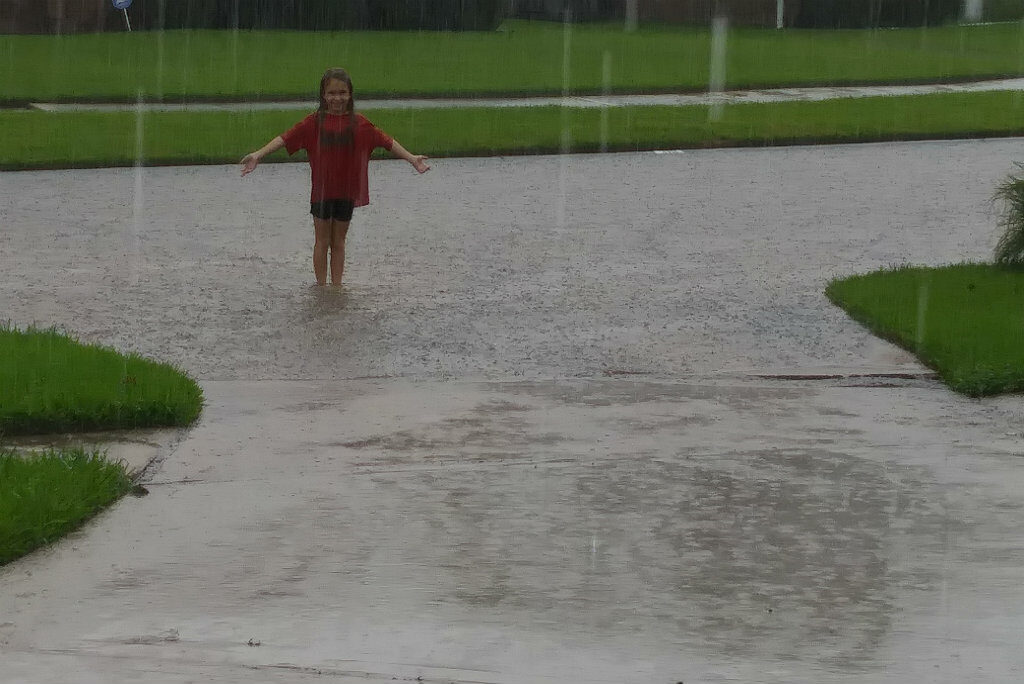
The other side of town, however, did not fare as well. The news coverage was absolutely devastating. People were being evacuated from homes completely submerged in water, and small children were sitting on rooftops with their parents, looking cold, wet, and terrified. Emergency services were maxed out, begging for back-up, and shelters were filling up. People were frantic. My social media feed exploded with tales of lost or stuck family members who desperately needed help; the list of missing people was growing by the minute. My husband was heartbroken to find that his coworker and dear friend had two feet of water in her home and two vehicles under water. Our neighbors had to arrange rescue for their elderly parents, whose homes were submerged.
There had been no mandatory evacuation for Friendswood residents. No one knew it was going to be this bad …
And still, the rain continued.
The Floods Came Up
When I woke up on Sunday morning to my weekly church alarm, it was still raining. At that point, it had been raining hard for over 24 hours without stopping.
It was just after 6 a.m. Church services all over town had been cancelled, by order of the authorities. We were told that if we were safe and dry, we were to stay put. So I stayed put — all the while feeling helpless, home-bound, and desperate to help in some way.
I wasn’t the only one. Despite the limitations imposed on us by rising floodwaters and local authorities, no one in Friendswood seemed content to sit still and wait things out. Relief efforts were organized all over town. Our neighbors and dear friends assisted with rescue efforts in their personal boats, our high school and area churches became shelters, and people came together to donate time, talents and goods to comfort those who had lost it all.
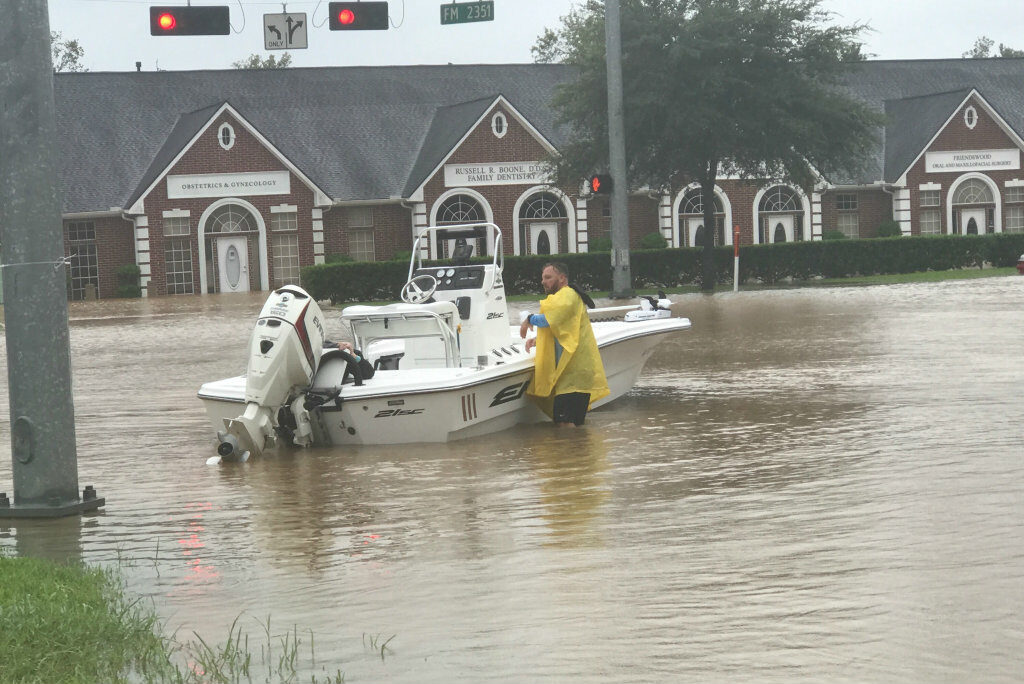
I got my family up, dressed and fed them, and began gathering donations. We found clothing, towels, blankets, toiletries and food items to spare, which we packed into our truck. Slowly, we made our way into town, through dangerous high water, in an attempt to get to the drop off location.
As we pulled up to get to the donation site, I had to choke back tears. Men, women and children were working feverishly in the pouring rain to take in the steady flow of donations. The area was packed to the hilt with supplies, items that we all hoped would offer relief, comfort, and a tiny bit of love to those who had lost everything.
If ever I have witnessed the body of Christ — His hands and feet in action — it was in that moment. I felt warm all over, even as I was drenched to the skin, knowing that this exact scene was playing out all over my state — that my brothers and sisters in Christ were coming together, in the way we do when things are out of our control, to love one another.
He’s Got the Whole World
The worst was behind us when we woke up on Wednesday morning. The sunshine and blue skies made us giddy with hope, though for other parts of Texas further East and into Louisiana, the nightmare was just beginning. Our town lost approximately one third of its homes. The storms and flooding are still wreaking havoc, and the end is nowhere in sight. The death toll has climbed to 40 lives. Thousands have lost everything. The effects of this tragedy will be felt for months, even years, to come.
Texas is changed forever. Texans are changed forever.
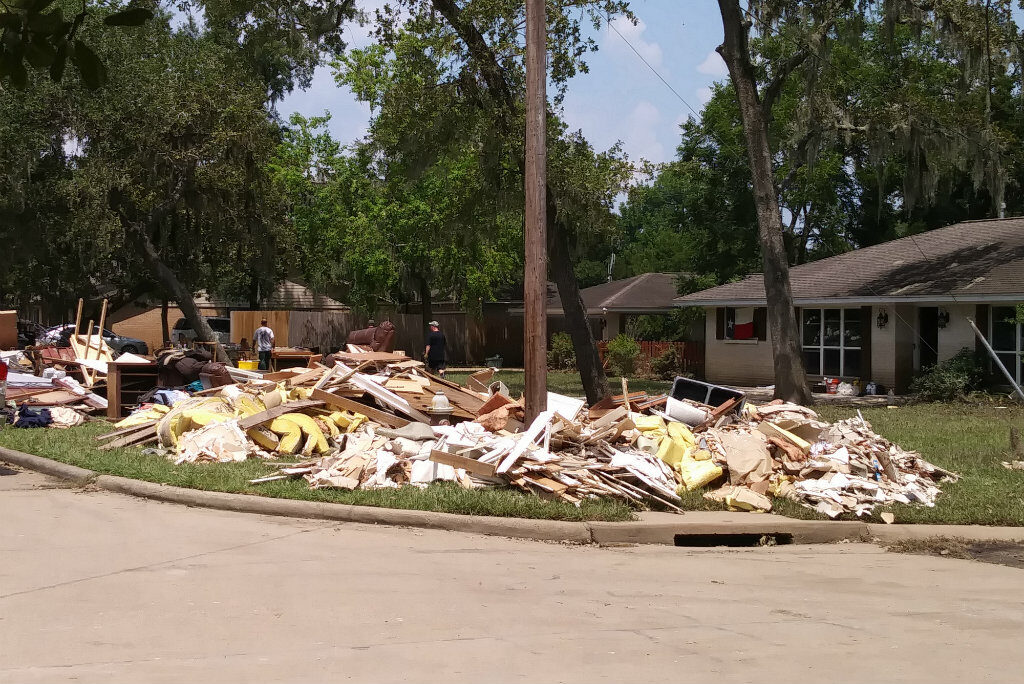
It’s hard to put into words how different life looks when you are surrounded by pain, destruction, and desolation. I know I will be haunted by this tragedy for the rest of my life.
But I have faith: faith that God will strengthen us during these dark times, and faith that His light will shine through. I’ve seen it already in my tiny community: God’s light shining brightly, even when all the world is dark.
Jennifer Davis lives with her husband Brad and their three children, Brooke, Sommer, and Cannon, in Friendswood, Texas, a small town south of Houston that was heavily hit by Hurricane Harvey. She is a member of Hope Lutheran Church in Friendswood.
The hurricane may be over, but the need is greater than ever. Find out what you can do to help the victims of Hurricane Harvey at lcms.org/harvey.
[box type=”note” border=”full” icon=”none”]
[icon name=”check-square-o” class=””] Subscribe to the Lutheran Witness
Print and digital subscriptions are available through Concordia Publishing House. [icon name=”caret-right” class=””] Subscribe Now
[/box]


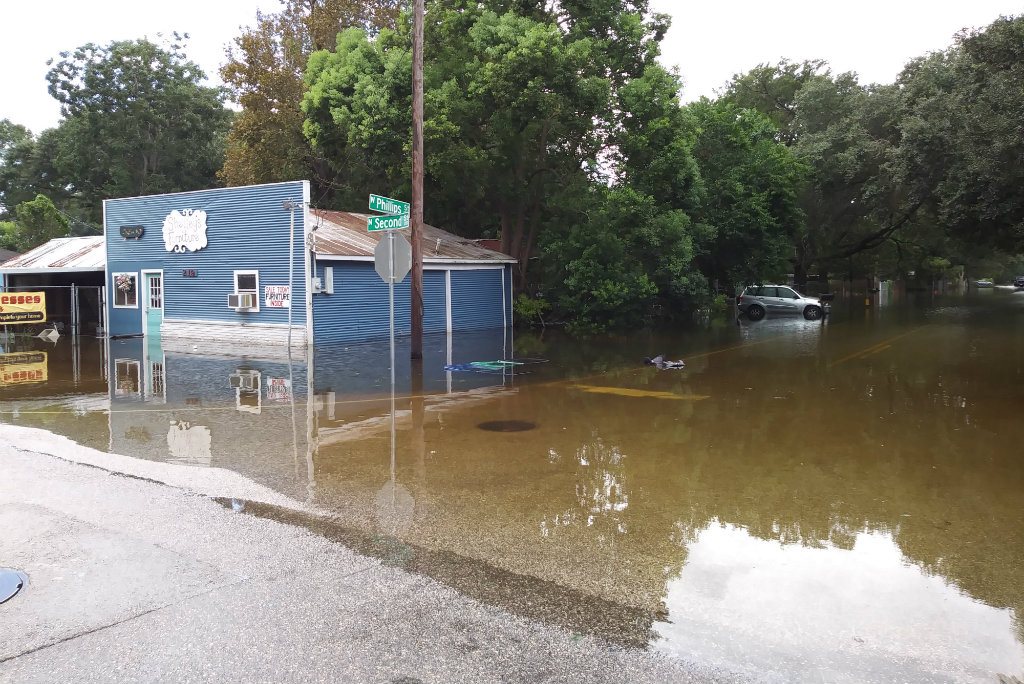
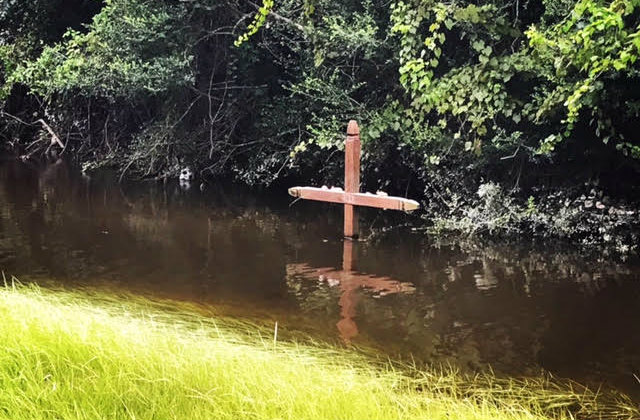
So beautifully written, Jennifer. I just can’t imagine my old hometown suffering so much distraction. Not even Alicia did that much damage in the 80s. I miss my days at Hope Lutheran where Pastor Ralph confirmed me in 1983! Prayers to all who are surviving the aftermath of this horrific storms.
Great post, Jennifer! I didnt realize it was you writing it until I saw the pic of your sweet girl! Very well written! Glad you and your family are safe and sound.
Thank you for sharing your personal story of Hurricane Harvey. I am so proud of you and your family and very grateful to God that you were safe.
Wonderfully written!
Oh My!
Jennifer this was beautifully written!
This article brought me to tears of sadness, hope and faith. You did an outstanding job writing this piece.
So happy you and your family are doing well.
❤️??
Lots of love! Thank you!!
Thanks for taking the time to share your experiences. God bless!